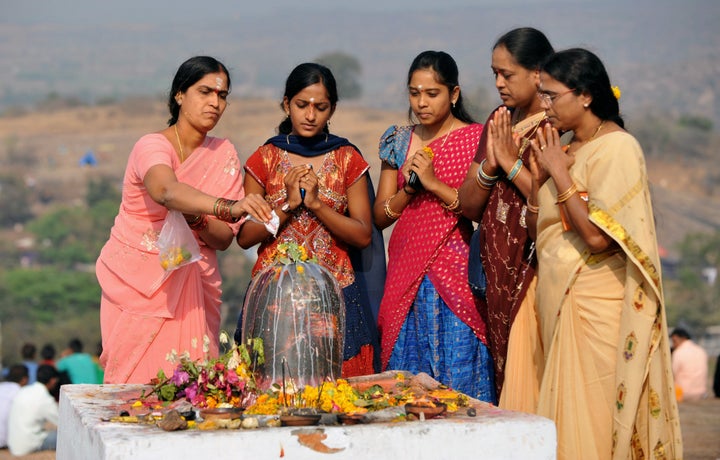
March 8 marked the 100th anniversary of International Women's Day. Wow! The world has certainly changed from 1911 to 2011.
The observance started as a way to recognize women's working rights in a growing industrialized western world, a time when voting rights were limited. Now, on this day, women in all countries benchmark the change in their societies.
And all will agree change has occurred to the role of a woman. I wonder if this change has only been "an upward progressive trajectory" or a winding spiral?
As a woman, an Indian American woman, a Hindu woman, an Asian American, I see the glass is more full than empty.
The many "hats" we wear are a reflection of our multiple identities.
The Indian identity recognizes a hundred years ago my ancestors were struggling for freedom. Today, India is an independent country. But still dealing with the impact of colonization at many levels. In the societal front they were working to reform customs which had shackled society. Institutionalized affirmative action is closing many of the gaps. Over time, the lingering vestiges should reduce further.
And, under the Asian American Exclusion Act our freedom was limited. We were Strangers from a Different Shore. Today gaps still exist, but there is hope for more acceptance to fulfill our potential.
In the professional arena, the doors have certainly opened, more in some industries than others. There is a general expectation of gender equity to bridge the existing gaps.
The role of both men and women is changing. Work-life balance issues are beginning to be shared responsibilities. Societies around the globe are in flux. Boundaries of acceptance are expanding (and sometimes contracting). What is "duty" and what are "rights"? Can this churning bring a new optimal balance? The new norm!
New paths are forged as individuals and families face myriad issues and make different, often difficult, choices without the comfort of known outcomes that traditional paths allowed. But then change is the only constant.
The Hindu identity is changing too. I started my adult journey somewhat believing the negative portrayal of the Hindu / Indian woman. This seemed to be the primary model. Yes, I did find some such examples, each one a painful experience. But, by and large, over time I have found they represent a small number relative to the whole population. The norm that I found values women with women often taking the lead role in families.
So, now I focus on the strength of the woman. Our traditions, from the beginning of time, has exemplified such strength in the Vedas and puranas, our allegorical stories. And, it has been a journey of discovery for me!
Often the societal wrong doings have been pegged to Hindu religion causing it to be maligned. Religion as exemplified by the Vedantic teachings shows the path of of self realization accessible equally to all. I see a need to retain the good in our ancient Hindu culture, to understand the essence and the value of the teachings, while reforming societal practices to reflect the contemporary ethos.
Many Hindu American temples are expanding beyond worship and creating community centers which have the potential of turning into seva centers. Perhaps someday in India, major Hindu temples will have autonomy from state control and will become learning centers as they once were before independence.
I just hope, as we make progress and change the way women, Indian American women, Hindu women, define themselves, we don't throw the metaphorical "baby" out with the bathwater. From the beginning, religion gave a Hindu woman an equal status in all aspects. Shouldn't the contemporary changing societal reforms reflect a balance too?
As I see it, in reality, a woman is a powerhouse of Shakti, and those qualities are brought to life through many, many stories in our tradition. In my opinion, wars of all kind are fought on the woman's body. Yes, she can be and is victimized. Physically, she may be weak, but she more than makes it up through the inner strength. She can be and is a warrior. She represents the true qualities as an agent of change.
Starting from the Vedantic trinity of God, equal importance was given to male and female. Feminine deities represent knowledge, wealth and are the energy for any change, such as Siva's transformative constructive destruction.
Lalitasahasranama eloquently describes 1,000 divine expressions of womanhood. And women like Gargi contributed to the Vedic literature. If Draupadi in Mahabharata represented a vocal woman of strength, Sita in Ramayan represented endurance and forbearance.
Somewhere along the way, impacted by the changing political governance and regimes, in the thousands-of-years-old culture, the equal rights diminished. But the inner strength remained.
As the liberated Indian American Hindu woman ventures into the world I hope she will be inspired by the best of the culture, balance her perspective and grow from strength to strength to strength. I know I have!